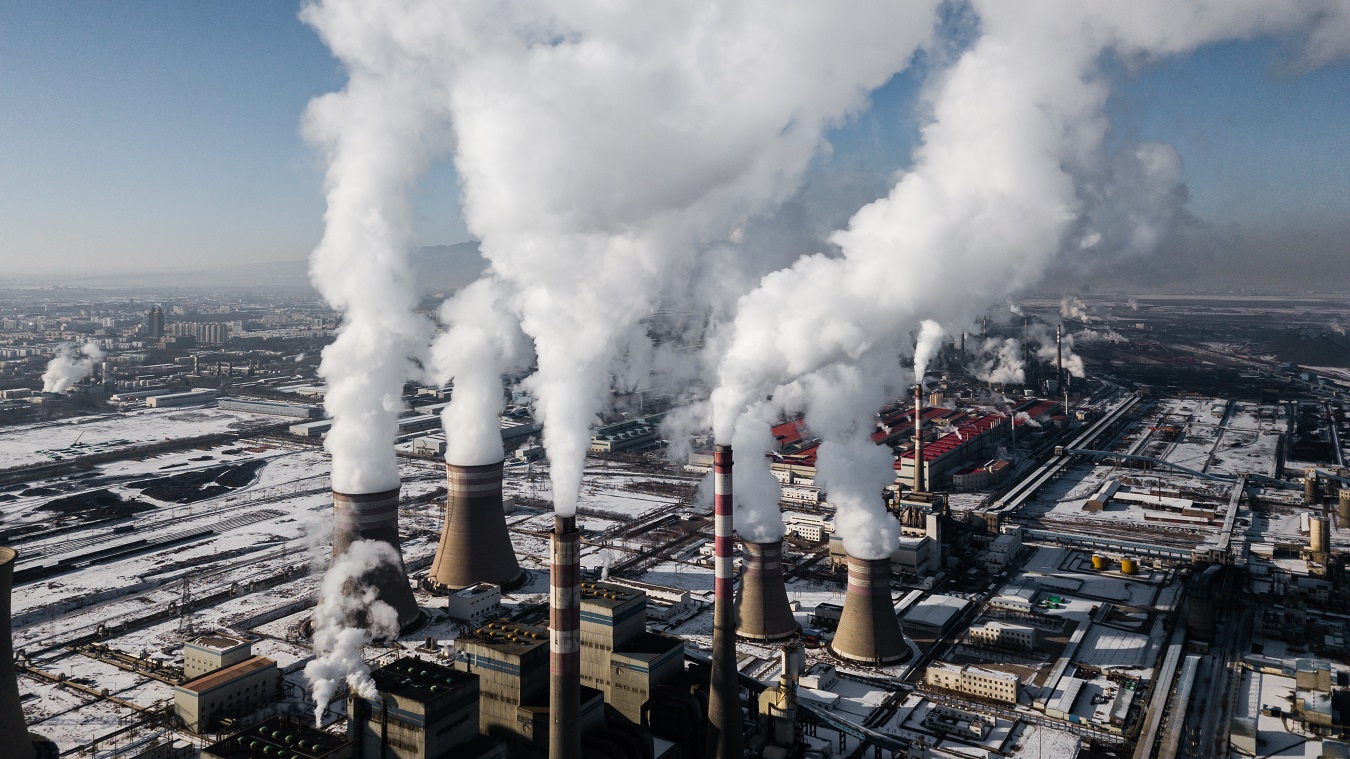Editor’s note: What model of nuclear power plant is best for Armenia? It seems none of the decision-makers questions the urge for Armenia to build a new NPP, for it is justified by the urge to ensure Armenia’s energy independence. The operating NPP is fundamental in providing Armenia with electric power. Yet, the plant’s exploitation resource has expired back in 2016, although it continues to operate owing to a number of technical revamps. It will probably continue operation in the years to come once again following a number of safety measure are taken. The considerations of the perspective for the construction of a new power plant have started long before the incumbent government was formed; it’s been a matter of discussions in the incumbency of all the preceding governments. Ampop Media’s Garik Harutyunyan tried to understand why this question has persistently remained a matter of discussions, yet has never been implemented so far.
The government of Armenia is negotiating with its partners on the matter of constructing a new nuclear power plant in Armenia. The counterparts are the United States, on the one hand, and Russia, on the other hand. This is what the Prime Minister of the Republic of Armenia Nikol Pashinyan told at the National Assembly answering a question from one of the MPs.
In fact, the information publicized by the Prime Minister came as a response to a statement by the American partners, who announced considering the perspectives of building a modular NPP in Armenia in an attempt to support the country’s energy independence.
“In a number of countries, including Armenia, we are assessing the feasibility of small modular nuclear reactors built with US technology that could facilitate greater energy independence from both Russia and the PRC [China],” Maria Longi, a State Department official coordinating U.S. aid to the former Soviet Union, stated at a hearing held at the Congress end of May.
However, reflecting on the statement by Longi, Pashinyan clarified mentioning that the Armenian side is currently considering more than one option, including a Russian [participation of the Russian partners], and that all partners are informed about the ongoing negotiations.
The Armenian side has no decision for now, although PM’s statement may drive to a conclusion that the offer made by the American partners is well worth consideration, too. According to Pashinyan, the volume of the investments, as well as the technical parameters, including the capacity-related issues are currently discussed. As part of discussions, a delegation from Armenia is expected to visit the US to get familiarized with the suggested options on spot.
Pashinyan said, the new power plant will come to replace the currently functioning station in Metsamor, which, the PM pointed, has expiry period of exploitation and will be inoperable following the dates.
The deadlines: an overview of the situation
The construction of the Metsamor NPP began in 1969. With the seismicity of the region in mind, the Metsamor NPP has been built to stand earthquakes up to 9-point magnitude on Richter scale (the highest estimated point of earthquake intensity in the Metsamor area is 8).
The first energy unit of the plant started functioning in 1976; the second unit was operated in the mid-1980s, with equal production capacity. Both units of the NPP were stopped in 1989. The decision followed the devastating earthquake in 1988 with an intention to secure Armenia against another potential disaster. The first unit has never been re-launched in later period. It continued to operate only as a donor of systems and equipment for the second, when the latter was under repair.
The government of Armenia decided to re-operate the Metsamor NPP in 1993 as the country was facing an energy crisis and an economic blockade by Turkey and Azerbaijan. The estimated lifespan of the second energy unit was 30 years, which would expire in 2016. However, following a number of modernization measures, the government endorsed extending the exploitation of the second energy unit until 2026.
A total of 189 million USD has been spent on modernization; 170 million USD have come as a credit from Russia, another 19 million USD have been allotted as a grant. The government has invested 63.2 billion AMD.
In 2023, has Armenia’s government officially started a process to extend the exploitation period of the Metsamor nuclear station for another 10 years. For that, safety measures are planned for the next 3 years to ensure the reliability of the plant for the extension period.
The roadmap of the Strategic Program for the Development of Energy Sector of the Republic of Armenia (encompassing period until 2040) envisions “150 million USD for the purpose, to be allotted from the means not prohibited by law”.
The amount used for the previous modernization, however, has twice the size of the currently envisioned amount. The decision by government passed in April though lacks the number. Instead it says a modernization program needs to be developed, which shall incorporate information on the following:
- The volume of the works and financial means required for the extension of exploitation period for the energy unit N 2,
- Information on the sources and mechanisms of financing;
- Evaluation of anticipated investments impact on the power station and the end-user.
Whatever the case, the closure of the station is planned for the year 2036, and Armenia already has documented obligation on that.
The partnership also includes… the closure and safe decommissioning of the Metsamor NPP and the early adoption of a road map or action plan to that effect, taking into consideration the need for its replacement with new capacity to ensure the energy security of the Republic of Armenia and conditions for sustainable development, among others, the Comprehensive and Enhanced Partnership Agreement between the European Union and Armenia (CEPA) says.
Ara Marjanyan, an expert in energy issues, points that the wording of the agreement may be interpreted in more than one way, and had to envision replacement with an equal capacity.
“We should clearly understand that the capacity of a nuclear station matters a lot. It is a guaranteed capacity. When you decommission a guaranteed capacity, you need to replace it with an equal one. Unfortunately, neither wind stations, nor solar station, nor the small hydroelectric stations are guaranteed capacities. As long as the weather is sunny, or the snow melts, and there is water, those stations will work; otherwise there are no guarantees,” Marjanyan explains.
Humbleness and audacity
The construction of a new power plant is on the agenda and it will take years before the construction is finished. In case the new one is not built before the closure of the old power station, Armenia will face the problem of ensuring required capacities, as it does when the NPP undergoes maintenance works. Furthermore, the average tariff for electric power grows tangibly during the maintenance works; in fact, there are two major advantages that the NPP offers – stability and lower cost of the produced electric power.
The top issue is, however, the capacity of the new NPP. Apparently, the more the capacity, the better, on one hand. Yet, on the other hand, the higher the capacity, the costlier the construction. Publications on the issue show that there is no common viewpoint on the question inside the government.
“1200-megawatt capacity in the current situation in Armenia and its economy is too much. But I hope that our economy will grow in the near future, so, why are we thinking only 5 or 10 years ahead?!” Movses Vardanyan, the head of the Armenian Nuclear Power Plant, points in a conversation with Ampop Media.
It has to be taken into consideration that the implementation of the 2016 memorandum on increasing the volumes of energy supplies between Armenia, Georgia, Russia and Iran signed in Yerevan would make it possible to export electric power to international markets, including Russia, through the territory of Georgia.
The memorandum envisioned preparations to be completed by 2018, with a perspective of constructing high voltage lines between Armenia and Iran, as well Armenia and Georgia. The construction of neither of the lines is completed yet. The political situation between Georgia and Russia, as well as the possibility of targeted attacks on the line by Azerbaijan (which has already been the case) have added to the already existing technical issues.
Despite this, Armenian government says regional trade in electric power is feasible.
“The construction of the new NPP will need billions of dollars. Of, course we should not be deterred by the figures, we need to take into account that the construction will take 10 years,” Gnel Sanosyan, the Minister of Regional Development and Infrastructures reiterates.
However, PM Pashinyan’s statements are not as unequivocal. Pashinyan says there are still issues to be discussed and we still need to understand what is the best capacity of the plant for Armenia.
Marjanyan underlines opting for any of the offers, be that the Russian or the American, will have political underpinning, whereas the issue had to be kept within the scope of technical considerations.
“The question is technical and very clear, indeed; currently, no modular reactor is exploited on industrial level. There are pilot projects. There are very interesting projects in Russia and China. And that’s all. I don’t think Armenia needs building its energy unit based on pilot or project level initiatives,” he says.
The expert says reliable technologies are best from an engineer’s perspective and that there is need to think about economic development. He also says the modular plants are interesting, but he would opt for those that have already proven their reliability.
“I think Armenia does need a new 1000 to 1200-megawatt energy unity,” he says.
Marjanyan also replies to the opponents, who insist building a high capacity reactor is costly and will fully satisfy Armenia’s demand for electric power to the damage of other power manufacturers in the country. The expert says construction of a power plant may take some 10 years, so, the time shall be used to boost the economy to ensure more demand for electric power.
“As to the costliness or the affordability, I would rather say there is much of a wordplay here. Calculations may vary,” the expert concludes.
By Garik Harutyunyan
Data analysis and infographics prepared by the author
This article has been written in the framework of the “Access to Energy” project in cooperation with the Friedrich Ebert-Stiftung (FES).
Other articles in this series: #EnergySecurity
© All the stories, infographics and other visuals bearing the Ampop Media logo is possible to publish on other audiovisual platforms only in case of an agreement reached with Ampop Media and/or JFF.
Փորձագետի կարծիք
First Published: 28/06/2023









